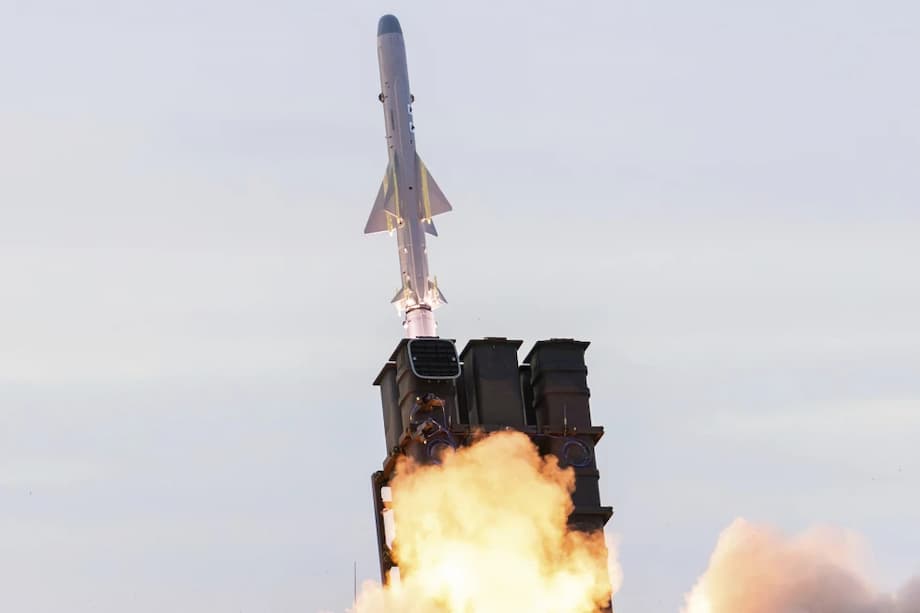Japan’s Rapid Missile Buildup: A Historic Shift in Defense Policy
Japan is embarking on a significant transformation of its national defense strategy, accelerating the deployment of domestically developed long-range missiles in response to mounting security challenges from China, North Korea, and Russia. The Japanese Defense Ministry announced that the first batch of upgraded Type-12 anti-ship missiles will be installed at Camp Kengun in Kumamoto Prefecture by March 2026—a full year ahead of the original schedule. This move marks a pivotal moment in Japan’s postwar history, signaling a departure from its traditionally pacifist stance and a determined effort to bolster its strike-back capabilities.
- Japan’s Rapid Missile Buildup: A Historic Shift in Defense Policy
- What Are the New Missiles and Where Will They Be Deployed?
- Japan’s Expanding Defense Budget and Military Modernization
- Regional Reactions: Support, Criticism, and Strategic Calculations
- Broader Strategic Context: The Taiwan Factor and Maritime Security
- In Summary
The Type-12 missile, with an extended range of approximately 1,000 kilometers (about 620 miles), will enable Japan to cover vast swathes of the East China Sea, including parts of China’s coastline and nearly all of North Korea. The deployment is part of a broader initiative to create a more self-sufficient military and to deter increasingly assertive military maneuvers by neighboring powers.
Why Is Japan Accelerating Its Missile Program?
Japan’s decision to fast-track missile deployment is rooted in a rapidly changing security environment. In June, Japanese forces observed two Chinese aircraft carriers operating near its southern islands simultaneously for the first time—a stark demonstration of China’s growing naval reach. Meanwhile, North Korea continues to advance its ballistic missile and nuclear weapons programs, and Russia has increased joint military activities with China near Japanese territory.
Defense Minister Gen Nakatani explained the urgency at a recent press conference:
The Ministry of Defense intends to continue working to build standoff defense capabilities more quickly in light of the most severe and complex security environment since the end of the war.
Japan’s southwestern Nansei island chain, stretching from Kyushu toward Taiwan, has become a focal point for these defense upgrades. The proximity of these islands to Taiwan and the Chinese mainland makes them strategically vital, especially amid concerns over a potential crisis in the Taiwan Strait.
What Are the New Missiles and Where Will They Be Deployed?
The centerpiece of Japan’s missile modernization is the upgraded Type-12 surface-to-ship missile. Originally designed for coastal defense, the new version boasts a range ten times greater than its predecessor, allowing it to strike targets far beyond Japanese waters. The first deployment will be at Camp Kengun in Kumamoto, with additional deployments planned for Camp Yufuin in Oita Prefecture and Camp Fuji in Shizuoka Prefecture in subsequent years.
Positioning these missiles on Kyushu places both China’s coastal regions and North Korea within range. However, Japanese authorities have been cautious about deploying them on Okinawa, the island closest to China, to avoid unnecessarily escalating tensions with Beijing. Okinawa already hosts several shorter-range missile batteries and is home to a significant U.S. military presence.
According to the Defense Ministry, the deployment is part of a phased plan to gradually equip all seven of Japan’s surface-to-ship missile regiments with the upgraded Type-12 system. The move is designed to enhance deterrence and provide Japan with credible counterstrike capabilities in the event of an attack.
Counterstrike Capability: A New Era for Japan’s Self-Defense Forces
Japan’s post-World War II constitution, particularly Article 9, has long restricted the country’s ability to use force except in self-defense. For decades, this meant a strictly defensive military posture. However, in 2022, Japan adopted a new five-year security strategy that explicitly names China as its greatest strategic challenge and calls for a closer alliance with the United States. The strategy also authorizes more offensive roles for the Self-Defense Forces, including the ability to strike enemy bases if Japan is attacked.
This shift is not without controversy. Some Japanese citizens and local officials, especially in areas slated for new missile deployments, have expressed concerns about becoming targets in a potential conflict. Okinawa Governor Denny Tamaki, for instance, has voiced opposition, warning that increased militarization could make the region a target and is not supported by many residents.
Japan’s Expanding Defense Budget and Military Modernization
To support its ambitious defense buildup, Japan’s Defense Ministry has requested a record 8.8 trillion yen (about $60 billion) for fiscal year 2026. This represents a 1.7 percent increase over the previous year and continues a 14-year trend of rising defense budgets. The goal is to reach 2 percent of GDP in defense spending by 2027, aligning Japan with NATO standards and responding to pressure from the United States for greater burden-sharing.
The 2026 budget request includes:
- Mass production of improved Type-12 ship-launched missiles
- Acquisition of submarine-launched missiles
- Construction of new multirole frigates and submarines
- Deployment of unmanned aerial, surface, and underwater vehicles for surveillance and coastal defense
- Upgrades to Aegis destroyers for Tomahawk missile capability
- Development of hypersonic missile interceptors in partnership with the U.S.
Japan is also investing heavily in unmanned systems, such as drones and autonomous vehicles, to compensate for its aging and shrinking population, which has led to military staffing shortages. The SHIELD coastal defense system, for example, will integrate unmanned aircraft, surface vessels, and underwater drones to enhance surveillance and response capabilities along Japan’s extensive coastline.
U.S. Missile Deployments and Joint Exercises: Deepening the Alliance
Japan’s military modernization is closely linked to its alliance with the United States. In addition to acquiring U.S.-developed Tomahawk cruise missiles, Japan will soon host the temporary deployment of the U.S. Army’s Typhon intermediate-range missile system during the Resolute Dragon joint military exercises. The Typhon system, capable of launching a variety of missiles including Tomahawks and SM-6s, will be stationed at the U.S. Marine Air Station Iwakuni in Honshu for the duration of the drills.
This deployment has drawn sharp criticism from both China and Russia. Russian Foreign Ministry spokeswoman Maria Zakharova called the move a “destabilizing step” and warned that Russia would take “appropriate military-technical measures” in response. China’s Ministry of Foreign Affairs also condemned the deployment, urging Japan to act prudently and avoid actions that could undermine regional stability.
Despite these criticisms, Japanese and U.S. officials maintain that the deployments are defensive in nature and intended to enhance deterrence and interoperability between the two allies. The exercises are seen as a demonstration of the U.S. commitment to Japan’s security amid growing uncertainty about the reliability of American security guarantees in the region.
Regional Reactions: Support, Criticism, and Strategic Calculations
Japan’s accelerated missile deployment has elicited a range of responses from its neighbors and domestic stakeholders. Chinese officials and state media have accused Japan of abandoning its pacifist constitution and pursuing military expansion. Wang Yunfei, a Chinese military affairs expert, argued that the deployment exposes Japan’s “ambition of military expansion” and could ultimately become a strategic burden rather than an asset.
China’s Ministry of National Defense spokesperson Zhang Xiaogang echoed these concerns, stating:
Japan has continuously defied the constraints of its pacifist constitution and pursued military expansion, which is dangerous and does not win people’s hearts. History is a vivid lesson: Japanese militarism inflicted untold suffering on the people of Japan, Asia, and the world.
In Japan, there is a mix of support and apprehension. Many defense analysts and policymakers argue that the missile deployments are a necessary response to the evolving security environment. Yoichi Shimada, professor emeritus at Fukui Prefectural University, stated that Japan must rapidly strengthen its missile systems to ensure robust security, especially as threats from China and North Korea intensify.
However, some local residents in deployment areas worry about becoming targets in a conflict. The memory of World War II and the devastation of Hiroshima and Nagasaki continue to shape public attitudes toward military expansion. The debate over Japan’s security policy is likely to intensify as the missile deployments proceed and as the regional security situation remains volatile.
Implications for the U.S.-Japan Alliance and Regional Security
The evolving security landscape in East Asia has prompted both Japan and the United States to reassess their defense posture and alliance commitments. While the U.S.-Japan security treaty obligates the United States to defend Japan in the event of an attack, recent political developments and statements from U.S. leaders have raised questions about the depth of that commitment.
Robert Dujarric, director of the Institute of Contemporary Asian Studies at Temple University in Tokyo, noted that uncertainty about U.S. intentions could drive Japan to further strengthen its own capabilities, and even spark debate about acquiring nuclear weapons—an idea that remains highly controversial in Japanese society.
For now, Japan’s focus is on enhancing conventional deterrence through advanced missile systems, robust surveillance, and closer integration with U.S. forces. The deployment of long-range missiles is intended to send a clear message to potential adversaries that Japan is prepared to defend its territory and interests.
Broader Strategic Context: The Taiwan Factor and Maritime Security
Japan’s missile deployments are closely linked to concerns about a potential crisis in the Taiwan Strait. China regards Taiwan as a renegade province and has not ruled out the use of force to achieve reunification. The Nansei island chain, which includes Okinawa and stretches toward Taiwan, is seen as a potential flashpoint in any conflict involving Taiwan and China.
By positioning long-range missiles on Kyushu and other southwestern islands, Japan aims to deter aggression and complicate any adversary’s military planning. The extended range of the Type-12 missile allows Japan to project power across the East China Sea and support the defense of Taiwan, should the need arise. However, Japanese officials have been careful to avoid actions that could be perceived as overtly provocative, such as deploying the missiles directly on Okinawa.
Japan’s maritime security is also under pressure from increased Chinese activity around the disputed Senkaku Islands (known as Diaoyu in China), which are administered by Japan but claimed by China. The deployment of advanced missile systems is intended to reinforce Japan’s control over these territories and deter any attempts at coercion or seizure.
In Summary
- Japan is accelerating the deployment of upgraded Type-12 long-range anti-ship missiles, with the first batch to be installed at Camp Kengun in Kumamoto by March 2026.
- The new missiles have a range of about 1,000 kilometers, putting parts of China’s coast and North Korea within reach.
- This marks a historic shift in Japan’s defense policy, moving toward a more proactive and self-sufficient military posture.
- The Defense Ministry has requested a record $60 billion budget for 2026 to fund missile production, unmanned systems, and naval upgrades.
- Japan’s actions are driven by growing security threats from China, North Korea, and Russia, as well as uncertainty about U.S. security guarantees.
- The deployments have drawn criticism from China and Russia, who accuse Japan of military expansion and undermining regional stability.
- Domestic debate continues over the risks and benefits of enhanced missile capabilities, with some local opposition in deployment areas.
- Japan’s missile buildup is closely tied to concerns about the Taiwan Strait and maritime security in the East China Sea.




